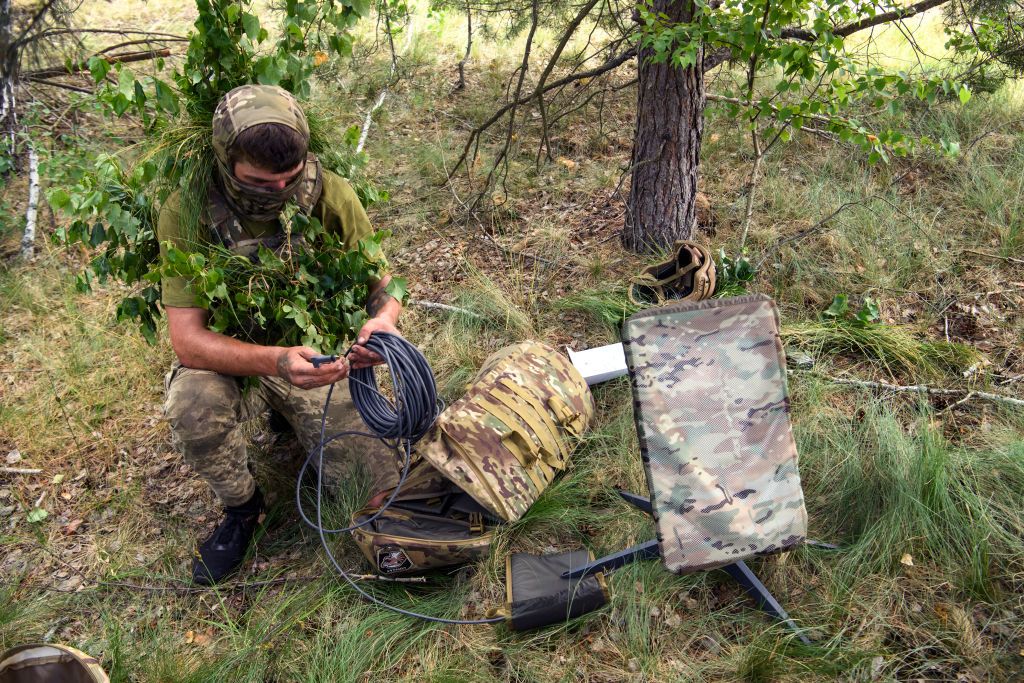The Washington Post reported that Russia successfully disabled Starlink terminals operated by Ukraine’s 125th Territorial Defense Brigade in Kharkiv Oblast, leading to a disruption in communication and contributing to Russia’s breakthrough in the area. The soldiers on the ground relied on drone feeds provided by Starlink to track Russian movements, which completely disappeared during the incident. Elon Musk’s SpaceX company had started providing Starlink terminals to Ukraine shortly after the Russian invasion in 2022, making it an indispensable tool for communication on the battlefield. Despite the setback, Commander-in-Chief Oleksandr Syrskyi mentioned that Russian advances had widened in Kharkiv Oblast, but the troops had not made a breakthrough, indicating tough battles ahead. President Volodymyr Zelensky also stated that Russian troops were able to advance up to 10 kilometers deep in Kharkiv Oblast, but the front in the region has now been stabilized.
President Vladimir Putin claimed that Russia has no current plans to capture Kharkiv but is targeting Kharkiv Oblast to create a buffer zone and prevent shelling in the neighboring area of Belgorod. This statement came amidst a new offensive by Russia with 30,000 troops targeting Kharkiv Oblast, which is located at the border with Russia in northeastern Ukraine. Putin’s assurance that Kharkiv itself is not a target contradicts the ongoing attacks by Russian forces in the region, raising questions about Russia’s intentions in the conflict. Despite the reassurance, the situation on the ground remains tense, with soldiers facing challenges due to disrupted communication channels and the need to navigate the ongoing offensive by Russian forces.
The disabling of the Starlink terminals in Kharkiv Oblast represents a significant blow to Ukraine’s ability to communicate effectively on the battlefield. The reliance on these terminals for drone feeds and communication highlights the technological advantage that they provide in conflict situations. The disruption caused by the incident underscores the vulnerability of such systems to attacks or interference, posing challenges for Ukraine’s defense capabilities. The loss of this critical tool could hamper Ukraine’s ability to monitor and respond to Russian movements in the region, potentially impacting the outcome of future battles in Kharkiv Oblast.
The widening of Russian advances in Kharkiv Oblast and Putin’s claim of creating a buffer zone raise concerns about the ongoing offensive in the region. The escalation of conflict in northeastern Ukraine, particularly in Kharkiv Oblast, indicates a heightened level of military activity and potential for further confrontation between Russian and Ukrainian forces. The strategic importance of this area, situated at the border with Russia, underscores the significance of the developments in Kharkiv Oblast for both parties involved in the conflict. The statements from Ukrainian officials and President Putin reflect the complex dynamics at play in the ongoing fighting, with implications for the future of the conflict and the broader regional security landscape.
The resilience and determination of Ukrainian forces in the face of challenges such as the disabling of Starlink terminals and Russian advancements in Kharkiv Oblast demonstrate their commitment to defending their territory and sovereignty. The efforts to stabilize the front in the region and prepare for tough battles ahead highlight the ongoing struggle for control and dominance in the conflict. The reliance on communication technology and strategic positioning in Kharkiv Oblast underscores the importance of innovative approaches to warfare in modern conflicts. As the situation continues to evolve, the role of key technologies and military strategies will play a crucial role in shaping the outcome of the conflict and determining the future of Ukraine’s defense against Russian aggression.


